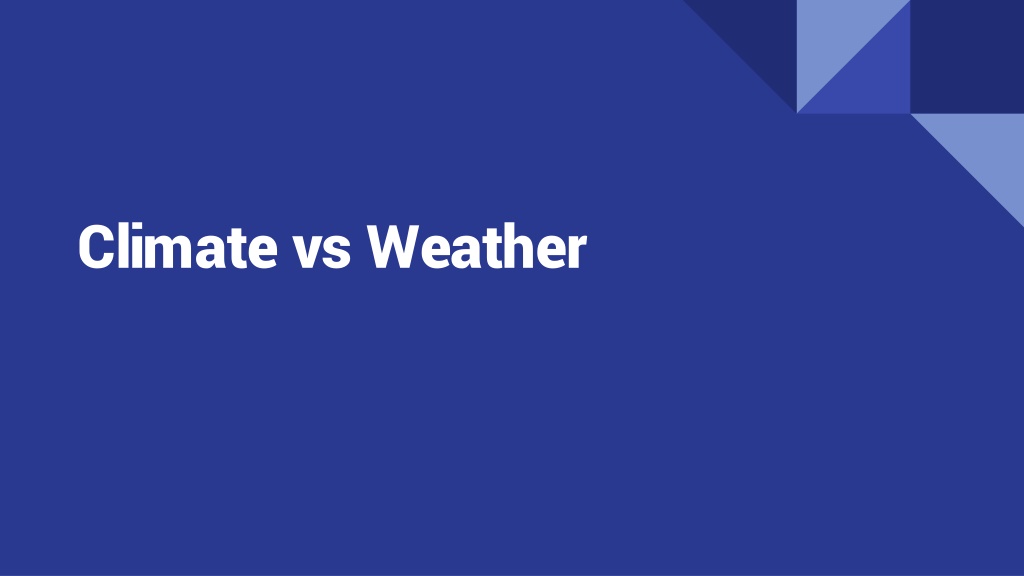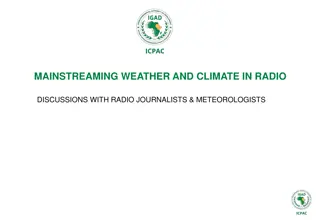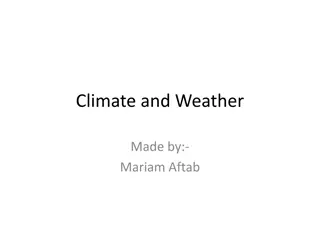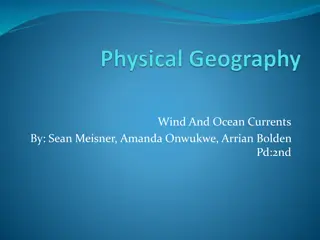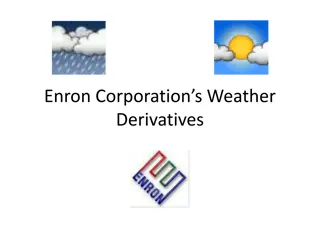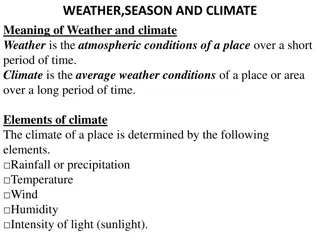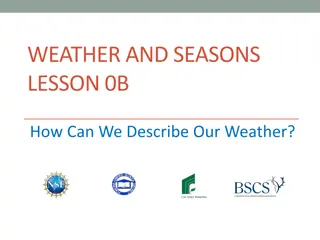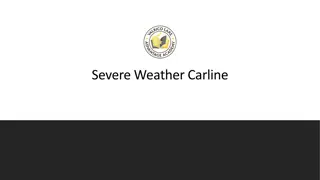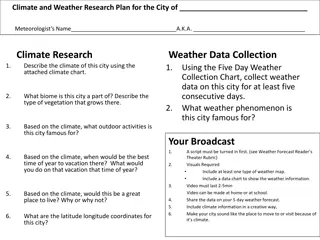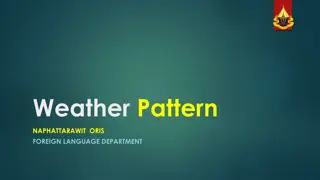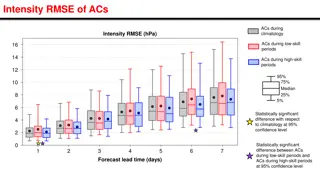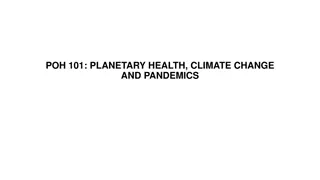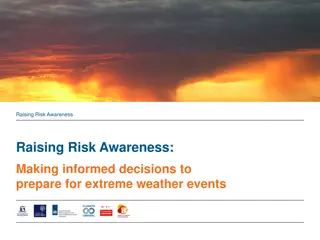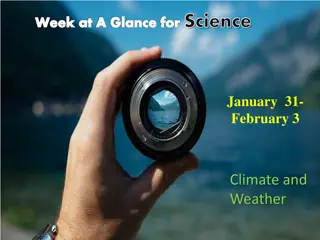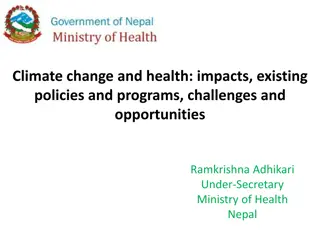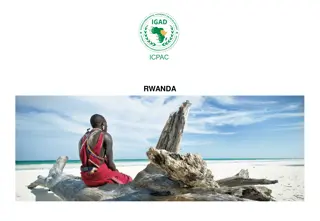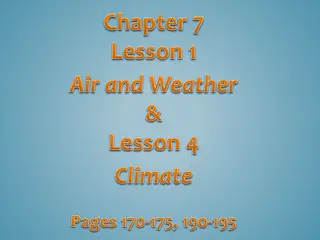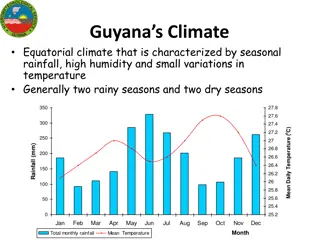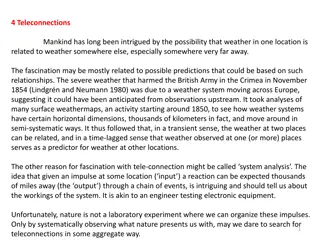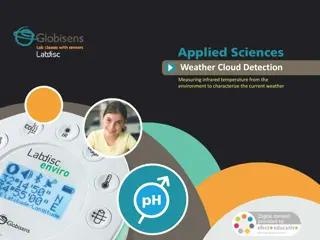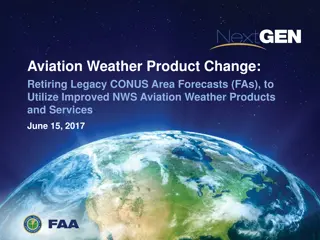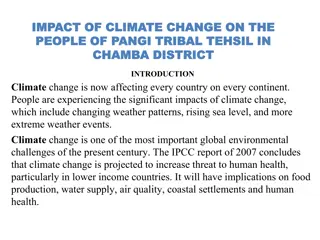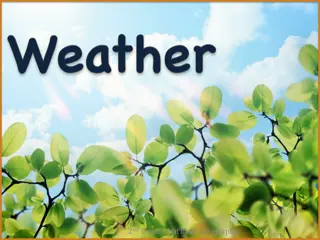Understanding Climate vs. Weather: Key Differences and Interrelationships
Learn about the distinctions between climate and weather, including their definitions, variables, and how they relate to air masses and geographical factors. Explore the impact of proximity to the ocean, orographic effects, seasonal temperature differences, convection currents, and the Coriolis Effect on climate patterns.
Download Presentation

Please find below an Image/Link to download the presentation.
The content on the website is provided AS IS for your information and personal use only. It may not be sold, licensed, or shared on other websites without obtaining consent from the author. Download presentation by click this link. If you encounter any issues during the download, it is possible that the publisher has removed the file from their server.
E N D
Presentation Transcript
How are Climate and Weather different? Weather Variables: Climate variables: temperature humidity clouds/ cloud cover wind daylight hours barometric pressure geography altitude precipitation Latitude/ Longitude geography ocean proximity average rainfall average temperature coriolis effect air/ ocean flow patterns Air mass formation
Definitions: weather: the state of the atmosphere at a specific place and time with respect to temperature, moisture, sun, wind, etc Climate: the weather conditions over a long period of time in a general area, region, latitude/longitude.
Air mass formation
World air masses
Now compare climate to air masses Look at your world map with climate color coding and explain how the climate locations are related to the air mass map on the back of your map. What variables might overlap between weather and climate? Make a list of 3 ideas and include evidence to support your claim.
Seasonal temperature differences: -Daylight hours -Angle of sun s rays and amount of relative heat
Convection currents Coriolis Effect
Lets look at ways that convection currents work on a bigger scale Based on what you have observed - 1)warm air/ water becomes less dense and ____________ 2)cold air/ water becomes more dense and ____________ 3)this combination creates a circulation called convection cells in both air and water.
On the Globe in the Troposphere These are called Hadley Cells - Draw them in your journal, notice they circulate different directions depending on latitude.
Is it only air that have global convection currents? Hadley cells refer to air mass circulation, but what about in the ocean?
World Map: Coriolis effect 1)Label the latitudes on your world map 2)now add arrows between the equator and tropic lines that deflect due to rotation of Earth on it s axis.
Lets put that in motion 1st cause of currents? 2nd cause for deflection? any other factors?
Climate Variables- cause and effect: Air and water Convection currents - Temperature differences, (rotation of Earth on axis) Location it formed (temperature); volume (mass) Air pressure/ air mass changes - Latitude, geography, origin, density, pressure, volume Temperature changes-
The link to all weather/ climate on Earth? The unequal heating of the earth s surface creates differences: -Angle of the sun s rays leads to seasonal changes in ___ -Amount of solar energy absorbed/ reflected = ________ -Ocean temperatures change due to _________ Add more of your own .
End of unit exit ticket: 1) Temperature, Barometric pressure, humidity, cloud types are data that can be gathered daily, but can be used to predict weather. Choose two and explain how they can be used to predict weather later in the day or even the next day. 2) What causes pressure changes? 3) What is the relationship between temperature and pressure with respect to these parts of the water cycle: evaporation, condensation, precipitation? 4) Make a T chart for ozone and greenhouse for the following: gases related to each; cause of gas production; long term effects of these gases in the atmosphere
